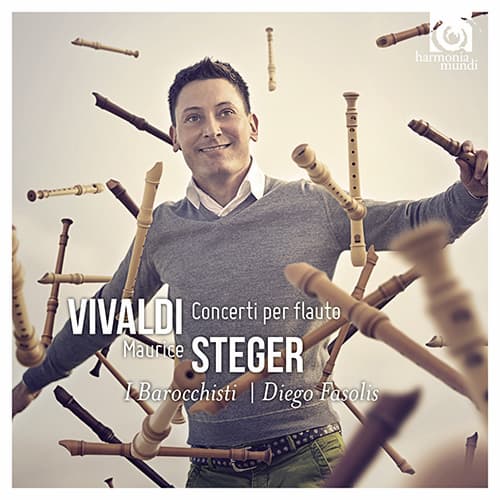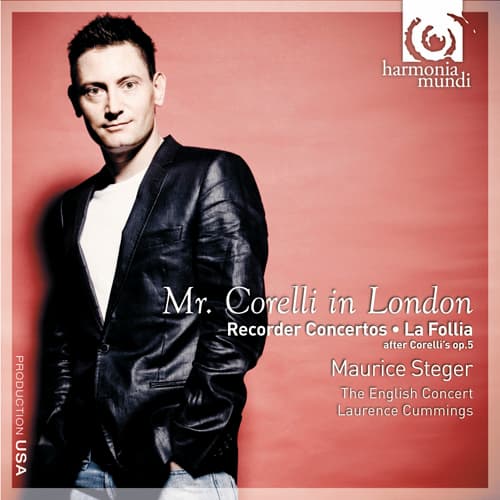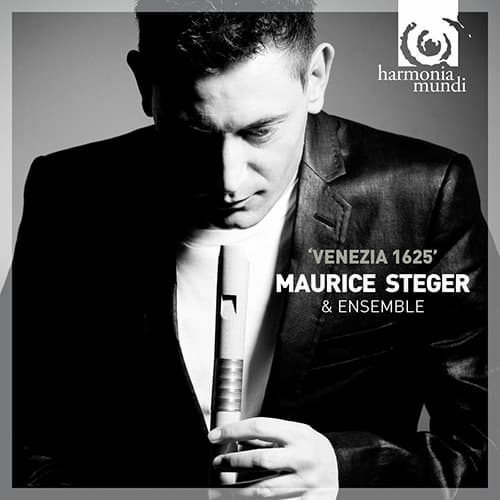Frequently hailed as the “Paganini of the recorder,” Maurice Steger is known for his extraordinary virtuosity and dynamic stage presence. Combining technical precision with expressive flair, Steger breathed new life into the recorder repertoire.

Maurice Steger
Beyond his performing career, which has taken him across the world, Steeger is a passionate educator who serves as a professor at the Zurich University of the Arts. His charismatic approach and commitment to early music have made him a pivotal figure in redefining the place of the recorder in contemporary classical music.
Born in 1971 in Winterthur, Switzerland, Steger has several award-winning recordings to his name; let’s sample some of his most iconic recordings and performances.
Maurice Steger Performs Telemann’s Fantasie No. 1
Vivaldi Concerti per flauto

One of Maurice Steger’s most critically acclaimed albums, the Vivaldi Concerti per flauto with Harmonia Mundi in 2014, sparkles with dazzling virtuosity and vibrant energy. Recorded with the Baroque ensemble “I Barocchisti” under the direction of Diego Fasolis, the album features a selection of Vivaldi’s famous recorder concertos.
Steger’s performance is marked by his “signature dazzling finger work, varied articulation, and colour.” Critics have praised Steger’s ability to navigate Vivaldi’s demanding passages with effortless precision while infusing each concerto with emotional depth and stylistic flair.
The album’s impact extends beyond classical music circles, appealing to a broad audience with its infectious energy and accessibility. It remains a benchmark for Vivaldi’s recorder concertos and a testament to Steger’s transformative artistry.
Antonio Vivaldi: Chamber Concerto in D Major, “La pastorella” (Maurice Steger, recorder; I Barocchisti; Diego Fasolis, cond.)
Mr. Corelli in London

Mr. Corelli in London (Harmonia Mundi, 2010) is one of Maurice Steger’s most critically acclaimed recordings, celebrated for its innovative concept and virtuosic execution. The album features recorder concertos and arrangements derived from Arcangelo Corelli’s influential Sonatas for violin and basso continuo, Op. 5, reimagined as concertos by 18th-century English composers and performers.
The album revives a forgotten Baroque performance tradition in which Corelli’s sonatas were adapted for larger ensembles and different instruments, including the recorder. The album was a critical and commercial success, earning praise for its originality, virtuosity, and historical insight. Reviews describe Steger’s articulation as “a firework display,” noting that “the embellishments are so fast and clean you can hardly believe your ears.”
Francesco Geminiani: Concerto Grosso No. 7 in D Minor (after Corelli’s Sonata, Op. 5, No. 7) (Maurice Steger, soprano recorder; The English Concert; Laurence Cummings, cond.)
Venezia 1625

In his “Venezia 1625” recording with Harmonia Mundi from 2009, Maurice Steger engages in a vivid exploration of early Baroque music from the city of Venice. Critics have praised the album as “one of the most amazing and enjoyable Baroque recitals of this or any other year,” highlighting its historical authenticity and technical brilliance.
Steger conceived this album in an effort to recreate the sound world of early Baroque Venice, focusing on chamber music for recorder and continuo. He performs on period-appropriate recorders crafted by Swiss maker Andreas Schwob, specifically designed to replicate the bright and agile sound of 17th-century instruments. Acclaimed for its musical vitality, historical insight, and technical excellence, the album won major international awards.
Giovanni Battista Fontana: Sonata III (Maurice Steger, recorder; Hille Perl viola da gamba; Lee Santana, chitarrone; Naoki Kitaya, organ; Sergio Ciomei; harpsichord)
Engagement with Bach
Steger’s engagement with the music of Johann Sebastian Bach reflects his broader mission to expand the recorder repertoire and showcase its versatility. While Bach’s recorder parts are often found in ensemble works, Steger also adapted solo and chamber works originally written for other instruments to suit the recorder.
Steger’s approach to Bach is characterised by a deep respect for historical authenticity, combined with a vibrant and expressive style that highlights the recorder’s unique timbre and agility. His Bach adaptations have been called “a revelation,” and his liquid and mercurial tone make the recorder “sing with Bach’s genius.”
Maurice Steger’s artistry is a captivating blend of technical brilliance, historical insight, and infectious charisma. In fact, he is redefining the recorder as a dynamic force in Baroque music. His recordings and performances showcase an unparalleled ability to breathe vibrant life into early music, cementing his legacy as one of the instrument’s most innovative and inspiring ambassadors.
For more of the best in classical music, sign up for our E-Newsletter



